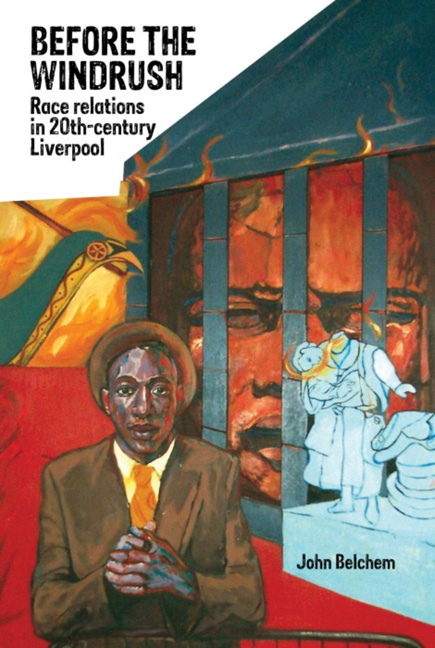Book contents
- Frontmatter
- Dedication
- Contents
- List of illustrations
- List of tables
- List of abbreviations
- Acknowledgements
- Preface
- Introduction: ‘The most disturbing case of racial disadvantage in the United Kingdom’
- Chapter One Edwardian cosmopolitanism
- Chapter Two Riot, miscegenation and inter-war depression
- Chapter Three Wartime hospitality and the colour bar
- Chapter Four Repatriation, reconstruction and post-war race relations
- Chapter Five Race relations in the 1950s
- Chapter Six 1960s: race and youth
- Chapter Seven The failure of community relations
- Chapter Eight ‘It took a riot’
- Sources consulted
- Index
Chapter One - Edwardian cosmopolitanism
- Frontmatter
- Dedication
- Contents
- List of illustrations
- List of tables
- List of abbreviations
- Acknowledgements
- Preface
- Introduction: ‘The most disturbing case of racial disadvantage in the United Kingdom’
- Chapter One Edwardian cosmopolitanism
- Chapter Two Riot, miscegenation and inter-war depression
- Chapter Three Wartime hospitality and the colour bar
- Chapter Four Repatriation, reconstruction and post-war race relations
- Chapter Five Race relations in the 1950s
- Chapter Six 1960s: race and youth
- Chapter Seven The failure of community relations
- Chapter Eight ‘It took a riot’
- Sources consulted
- Index
Summary
Thanks to its massive dock system, ‘as solid and enduring as the Pyramids, the most stupendous work of its kind that the will and power of man have ever created’, Edwardian Liverpool, the proud (and prosperous) ‘second city of empire’, promoted itself as the pre-eminent cosmopolitan hub, the commercial and human entrepôt linking the old world and the new:
Indisputably the premier ocean port in the British Empire, it is the most famous and the most frequented emporium of cosmopolitan traffic the world has known in ancient or modern times … In olden times it used to be said that “all roads lead to Rome”. Today all seas lead to Liverpool, if not as a terminus, at least as an exchange or a clearinghouse for world-wide international transport. There is no part of the globe, however remote, whose natives may not be met on the Liverpool landing stage, and there is no territory so distant whose products do not pass from time to time through the docks and warehouses of Liverpool and Birkenhead.
On a ‘democratic promenade’ along the famous landing stage, renowned for its ‘cosmopolitanism, comprehension and catholicity’, the flaneur encountered the world in one city: ‘all sorts and conditions of men, of all colours … everybody seems to be here, from everywhere. This is representative humanity.’ Jumma prayers at the local Mosque (one of the first in the country) attracted ‘coloured races’ of ‘a cosmopolitan kind’, an ‘ingathering of the representatives of all nations’ with varied dress and ‘polyglottic’ tongues. While engaged in ethno-sectarian defence of its large migrant flock from across the Irish Sea, the local Catholic press sought reassurance and perspective from the city's demographic profile,
a mixture of races the like of which no other industrial community in the North of England can furnish. Jew and Gentile, Mongolian and Negro, Irish and Welsh, with no overwhelming proportion of the genuineborn Englishman, and last of all, that hybrid product of civilisation, the Orangeman, all live and have their being on the banks of the Mersey.
- Type
- Chapter
- Information
- Before the WindrushRace Relations in 20th-Century Liverpool, pp. 17 - 38Publisher: Liverpool University PressPrint publication year: 2014



